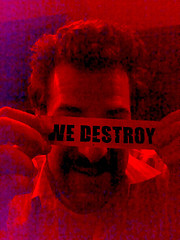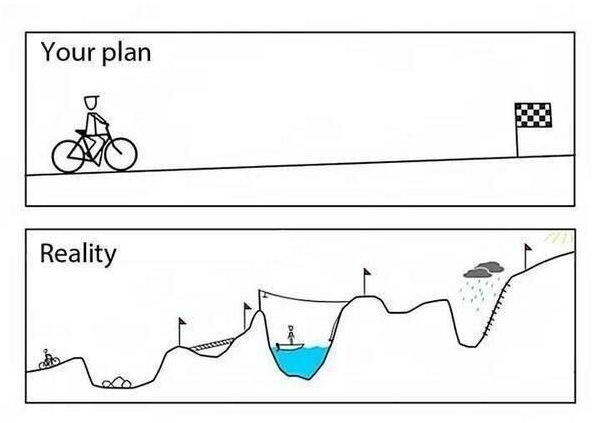|
|
|
Wednesday, March 7th, 2018

When a new innovation is announced do you ever wonder how much of their own Kool-Aid the founders have drunk?
At how often reality doesn’t support the vision?
And to what lengths they’ll go to prove their vision is reality?
Think Theranos.
Think ride-hailing companies, such as Lyft and Uber.
The vision they sold was that they would lessen traffic congestion.
The reality is far different.
One promise of ride-hailing companies like Uber and Lyft was fewer cars clogging city streets. But studies suggest the opposite: that ride-hailing companies are pulling riders off buses, subways, bicycles and their own feet and putting them in cars instead. (…) One study included surveys of 944 ride-hailing users over four weeks in late 2017 in the Boston area. Nearly six in 10 said they would have used public transportation, walked, biked or skipped the trip if the ride-hailing apps weren’t available.
The reality of that vision is simple. Skip the bus/subway/rail/bike/feet and summon a car to add to the crowd.
And it’s unlikely that antonymous cars will improve things.
If anything, they will likely exacerbate the problem, since they will be even cheaper.
Speaking of Uber and visions.
In spite of the $17.3 billion lavished by investors, Uber’s 2017 loss was $4.5 billion and in its nine years of life it burned thorough $10.7 billion, 2/3 of its total funding — another record.
Wow! That’s some Kool-aid.
Image credit: Rob
Posted in Communication, Entrepreneurs | No Comments »
Monday, June 5th, 2017
It’s amazing to me, but looking back over more than a decade of writing I find posts that still impress, with information that is as useful now as when it was written.
Golden Oldies are a collection of what I consider some of the best posts during that time.
Passion. Everybdy talks about it; builds companies around it; it infuses cultures — personal, company, country. But, like most powerful emotions, it’s a two-edged sword.
Read other Golden Oldies here.
 Last spring I wrote that passion sustains me and keeps my writing, but that even passion needs a day off now and then. Last spring I wrote that passion sustains me and keeps my writing, but that even passion needs a day off now and then.
But what happens with there is no day off; when passion is continually cranked up?
When passion runs wild it can lose touch with reality.
You can see the aftermath of unchecked passion in companies whose positional leaders were so focused on their vision that they allowed nothing to stand in the way and the political leaders who are more focused on spreading their ideology than fixing their country.
Passion unchecked yields freely to fanaticism.
Fanaticism obliterates humanity.
Flickr image credit: JM3
Posted in Business info | No Comments »
Tuesday, August 23rd, 2016

Is making a difference important to you?
It should be, since most workers are happier and more productive in companies that give back.
That holds true no matter the age of the worker or the size of the company.
Companies, departments, teams or individuals can choose to make a difference.
Some go far afield and seek to mitigate the problems and tragedies of less fortunate countries.
Others focus on local problems, which makes sense since companies are usually urban.
That said, you don’t have to go overseas to third-world countries to find third-world problems to solve.
Tech could start less than 200 miles from San Francisco in Fresno, CA.
While Facebook wanted to wire India, it isn’t interested in doing the same in the US.
Though Central Valley harvests most of the country’s crops, tech workers often forget their neighboring region exists. In the Bay Area map according to Urban Dictionary, the Central Valley is jokingly referred to as “unknown parts.”
And consider this.
According to a recent Pew survey, approximately five million students still lack access to high-speed Internet. Experts have taken to calling it the “homework gap.”
Or turn your gaze to the other coast and some of the most beautiful countryside in America — Appalachia — home to some of the most grinding poverty and third-world living conditions to be found in the US.
And while you’re gazing, check out what’s being done to change that.
Crunching all the data imaginable won’t always yield a solution, since anomalies do happen (for an in-depth understanding of that read Isaac Asimov’s Foundation series, still brilliant/viable after 60+ years).
Back when I lived in San Francisco, it was often termed “49 square miles surrounded by reality.”
That’s expanded to 7,000 square miles (contained in the nine-county Bay Area) surrounded by the reality of places like Fresno.
Tech needs to understand that technology in and of itself is not a solution.
Tech is digital, while the world and the humans who inhabit it are, and always will be, analog.
So while technology itself isn’t a solution, the ways it can be applied may be.
~~~~~~~~~~~~~~~~~
One more request.
School is starting soon and most kids are shopping, whether at Nordstrom or Walmart, while thousands of foster kids are facing school without even a backpack.
There are dozens of ways you can help them.
Skip a few Starbucks or Peets visits, choose a charity, check it out and donate the coffee money you saved.
Flickr image credit: Duck Lover
Posted in Communication, Ducks In A Row, Motivation, Retention | No Comments »
Friday, June 17th, 2016
A Friday series exploring Startups and the people who make them go. Read all If the Shoe Fits posts here.
 Programmers in Silicon Valley are reeling. Programmers in Silicon Valley are reeling.
What are they going to do?
No more clandestine recruiter calls from unicorn startups offering million dollar salaries, six figure sign-on bonuses, thousands of stock options and country club style perks.
And those graduating with CS degrees may find fewer startups bidding against each other for their services.
Not to mention layoffs. Layoff a programmer? Are you nuts?
Nope, that’s exactly what’s happening.
And, as an ex recruiter, all I can say is it’s about time.
Perhaps now candidate focus will return to the mission and the tech, instead of the dollars and bragging rights.
Because, in spite of the all the media coverage, there is a large number of programmers who don’t believe it will affect them — others, sure, but not them.
Of course, it’s hard when you’ve been the golden (mostly) boys and reality rears its ugly head.
But ask anyone in tech who has been around for awhile and they’ll tell you that change is constant and what goes up comes down — and eventually goes back up again.
Programmer jobs not excepted.
Image credit: HikingArtist
Posted in Compensation, Hiring, If the Shoe Fits | No Comments »
Tuesday, January 12th, 2016

The start of every year is a time of resolutions, which I never believed in; resolutions waver, while goals flourish — not the same thing at all.
With the goal of helping you improve whatever results you seek in 2016, I suggest you relocate.
Choosing to move from the State of Denial to almost any other State will yield amazing results and unexpected benefits.
Of course, the greatest challenge is forcing yourself to leave a place that is fully in your control, completely customizable and personally satisfying.
The State of Denial offers great weather and no storms. It’s one of the only places where wishing for something different actually alters your reality.
The problem is that the State has a tiny population; one person, to be exact, with little chance of growing, as well as a limited range of vision, so it can be a very lonely place.
Worse, some people live in multiple States of Denial simultaneously and trying to move from all of them at the same time can lead to high stress and even depression.
Beyond that, most Denial States are normally at war with other Denial States and constant war is not only exhausting, but also precludes moving forward on other projects.
The secret of relocating is to first define that particular State’s boundaries.
Once you are sure of what you want to leave, then you need to define where you want to go.
You may find that reaching your ideal State is better done in smaller hops, as opposed to one great leap.
The key is that only you can define your current State’s perimeter or the boundaries of where you are headed.
Flickr image credit: Tambako The Jaguar
Posted in Ducks In A Row, Personal Growth | No Comments »
Thursday, June 18th, 2015

The questions on Quora provide a fascinating look into today’s mindset, which makes for a giant time-suck, so I rarely allow myself the luxury.
However, Why are VCs so adamant about warm intros? caught my attention, because I am asked it so often.
Most of the responses were justifications from VCs, but two provided a refreshing dose of reality.
Not surprising that neither are VCs.
The reason they want warm intros is because they are too lazy to research things themselves and many of them don’t know anything about starting a company or building one. The smart experienced guys at the top who have actually done something are too busy so they have the dime-a–dozen MBAs they hire do grunt work. Since the d-a-d has never actually built anything, and doesn’t really know what you do, they want a “warm” intro. Warm means someone else they can blame if they screw up yet again. —David Feldman, CEO, ZF Micro Solutions, Inc.
Classism. No further to look than that. Let’s not make it complicated by trying to avoid the unpleasant. —Michael O. Church
The ‘warm intro’ investor bias is one of the worst, because it raises the funding bar to almost insurmountable heights, which limits the entrepreneurial pool and even reduces the chances of success.
Whether it’s laziness, fear of the unknown or insecurity outside of their comfort zone doesn’t matter — the result is the same.
Too many good founders/companies don’t get funded.
Flickr image credit: Alexx Malev
Posted in Entrepreneurs, Innovation | 2 Comments »
Friday, May 1st, 2015
A Friday series exploring Startups and the people who make them go. Read all If the Shoe Fits posts here
 Years ago I wrote a post for a leadership blog about coping and based on the questions I’m hearing and the discussions I’m involved in it’s time to re-post it. Years ago I wrote a post for a leadership blog about coping and based on the questions I’m hearing and the discussions I’m involved in it’s time to re-post it.
“Life is not what it’s supposed to be. It’s what it is. The way you cope with it is what makes the difference.”
–Virginia Satir
Smart lady, Virginia.
That thought, or any variation thereof, is probably the single most important concept people need to wrap their heads around.
Neither vehement denial nor passionate pleas will change what is; what matters is what you choose to do.
Positional leaders and those who claim the leadership label are often more into pleas and denial than they are into coping.
Understandable, since it’s much easier to rail or whine than to get off the proverbial ass and do something.
But that is exactly what leading requires and leading yourself is the most important leadership job you will ever have, because if you can’t lead yourself you will never have the opportunity to lead others.
Coping isn’t about playing ostrich or ignoring something and hoping it will go away.
Coping doesn’t involve ideology and rhetoric.
Coping doesn’t always mean solving the problem or overcoming the challenge.
Coping isn’t about being a hero or going it alone.
Coping rarely yields a perfect or even a complete fix.
While founders are less into obvious pleas and denial, they tend instead to superhuman efforts and projecting a ‘we can overcome anything’ persona.
They would do better to embrace the final description of what coping truly is.
Coping means facing whatever it is head on, recognizing it in its entirety, figuring out how best to deal with it, and then doing what needs to be done—all while accepting the reality and limitations of what is possible.
Image credit: HikingArtist
Posted in If the Shoe Fits, Personal Growth | 3 Comments »
Friday, January 16th, 2015
A Friday series exploring Startups and the people who make them go. Read all If the Shoe Fits posts here
 Background: Long-term readers know I spend a lot of time in my yard. It’s taken 10 years for me to actually like it, although people have been stopping to compliment me for at least five years. Background: Long-term readers know I spend a lot of time in my yard. It’s taken 10 years for me to actually like it, although people have been stopping to compliment me for at least five years.
Back then a friend gave me a split-image picture showing two yards, one lush and the other bare dirt with a few scraggly plants. The lush image is labeled “fantasy” and the other “reality.”
Imagine my surprise when I scrolled through my LinkedIn feed (a rare occurrence) and found the startup (all life, actually) version of my split-image garden.
It was posted by Andy Adams CEO, GreenEcho, LLC and it speaks for itself.
So remember, nobody ever said reality was easy — doable, but not easy.
Image credit: HikingArtist
Posted in If the Shoe Fits | No Comments »
Thursday, July 24th, 2014
 It’s incredible how much emotion can completely boost or derail absolutely everything at work and in life. It completely changes the color and tenor of any discussion or experience, though actual reality remains unchanged. In fact, I’m coming to believe that almost everything is emotionally driven in human experience – history, sociology, culture, psychology, biology, health, etc. It’s incredible how much emotion can completely boost or derail absolutely everything at work and in life. It completely changes the color and tenor of any discussion or experience, though actual reality remains unchanged. In fact, I’m coming to believe that almost everything is emotionally driven in human experience – history, sociology, culture, psychology, biology, health, etc.
Emotion is that elusive, inexplicable thing that gives or takes away will and energy, determines perception and choice and, to a large extent, outcomes in life. Yet we know almost nothing about it—or at least I don’t. I know how it feels and what it does, but not where it comes from, what causes it and, most importantly, how to optimize it.
I do know that hormones and whether I am rested, hungry, etc., influence my emotions. However, I am reflecting on how easily I see exactly the same thing as positive or negative depending on how I feel. How strongly emotions determine my ability to deal well or badly with large, or even the smallest, matters.
Building a company is about creating an emotional drive in a group of people to accomplish something together. I’ve noticed that whenever I’m convincing people to join or am working out problems it is not just a conversation or intellectual work, but a significant outlay of emotional energy.
It’s as if my emotions are a vibration at a certain frequency that has the ability to cause vibration in others as well, as if emotions are sound or music. If we take a comparison to physics:
“If you were to take a guitar string and stretch it to a given length and a given tightness and have a friend pluck it, you would hear a noise; but the noise would not even be close in comparison to the loudness produced by an acoustic guitar. On the other hand, if the string is attached to the sound box of the guitar, the vibrating string is capable of forcing the sound box into vibrating at that same natural frequency. The sound box in turn forces air particles inside the box into vibrational motion at the same natural frequency as the string. The entire system (string, guitar, and enclosed air) begins vibrating and forces surrounding air particles into vibrational motion.
The tendency of one object to force another adjoining or interconnected object into vibrational motion is referred to as a forced vibration. In the case of the guitar string mounted to the sound box, the fact that the surface area of the sound box is greater than the surface area of the string means that more surrounding air particles will be forced into vibration. This causes an increase in the amplitude and thus loudness of the sound.”
This is exactly how you build an organization—as the entrepreneur and founder, it starts with my emotional vibration and transferring that emotional vibration to other competent people who can help me build my vision. And a large part of doing that is to accept that this vision is no longer mine, but that it’s now the vision of the people to whom I transferred the emotional vibration.
That means, building an organization is like creating the sound box in the above example—it amplifies the effect of the emotional drive towards goals.
I recently spoke with my father about the fact that everything in my life and the world seemingly being emotion-based; that emotion is what provides us with the energy to have a vision within ourselves and the force to transfer it to others while maintaining it within.
He said that the transference happens in a variety of ways—facial expression, gestures, word choice, etc.—and that the mix of these and other tools can enhance or detract from the vibration.
In other words, we need to actively think about emotional transference and the tools we can use to promote it. What can we learn from the physics of vibration?
Beyond physics there’s biology. If I know that I am deeply affected in my emotional states and my dealings with people by hormones (such as oxytocin) and pheromones, as well as rest, nutrition and other factors, then to what extent I can control this? Clearly it is necessary to maintain good physical condition, which includes rest, exercise and proper nutrition. My father believes we can determine the hormone levels in our bodies by thought and training; perhaps this is what the practice of Buddhist mediation is all about—the end to suffering through changing our perception of reality.
Ultimately our emotions determine our perception of reality, so a slight change in chemical balance will enable us to achieve great things or completely derail what we’re attempting to accomplish.
Some try to use chemistry (pharmaceuticals & drugs) to optimize this, but unfortunately the tools and substances used by psychologists and psychiatrists are woefully crude and we are just in the beginning phases of understanding how this can function.
Emotion is a central aspect of elite athleticism. We obviously can optimize like athletes, so why don’t we? They start by influencing the natural factors that they actually can control, i.e. nutrition, rest, positive environment and focused exercise.
Shouldn’t optimizing our biology be just as primary a task for entrepreneurs as it is for athletes in order to enhance our ability to execute?
Why are so many of us neglecting to utilize this tool to help us achieve our goals?
Note: KG Charles-Harris is CEO of Quarrio (former CEO of Emanio). KG’s company was recently awarded SIIA’s (Software & Information Industry Association) NextGen Awards in 2 of 3 categories – “Best Overall” and “Most Disruptive.” Quarrio won from a pool of several hundred applicants. The runner-up was Junyo, co-founded by Steve Schoettler, co-founder of Zynga, and funded by Mitch Kapor, Learn Capital and others.
Posted in Culture, Entrepreneurs | No Comments »
Tuesday, December 10th, 2013

What’s wrong with our so-called leaders?
I finally figured it out.
They live in an alternate reality.
Not all of them, but too many.
And I don’t have to go to Washington (DC) to see them in action.
I can stay home in (southwest) Washington (State)—Clark County, to be exact (nowhere near Seattle.)
We have a county commissioner named David Madore who says he doesn’t know how someone can have a “meaningful” life on $50,000 a year.
First you have to understand Clark County reality.
According to the American FactFinder, a report from the U.S. Census Bureau, data from 2007-2011 indicates the median earning for a single worker in Clark County is $32,337.
Scott Bailey, regional labor economist for the Washington state Employment Security Department, says if you take out all of the seasonal workers from that number, it jumps to about $46,000 or $47,000. The median for men being $51,502 per year, and $40,023 per year for women.
Bailey says more than half the individuals in the county make less than $51,556.
Therefore, substantially more than half of us don’t live meaningful lives.
(New York City, at a median $50,895, is slightly lower, but with a far higher number of peole whose lives aren’t meaningful and those poor folks don’t even have someone to tell them.)
Obviously, Madore lives in an alternate reality.
As do most politicians, corporate chieftains, a good deal of Silicon Valley, Wall Street and others.
Flickr image credit: Jim Champion
Posted in Compensation, Ducks In A Row | No Comments »
|
 Subscribe to
Subscribe to
MAPping Company Success
About Miki 
Clarify your exec summary, website, etc.
Have a quick question or just want to chat? Feel free to write or call me at 360.335.8054
The 12 Ingredients of a Fillable Req
CheatSheet for InterviewERS
CheatSheet for InterviewEEs™
Give your mind a rest. Here are 4 quick ways to get rid of kinks, break a logjam or juice your creativity!
Creative mousing
Bubblewrap!
Animal innovation
Brain teaser
The latest disaster is here at home; donate to the East Coast recovery efforts now!
Text REDCROSS to 90999 to make a $10 donation or call 00.733.2767. $10 really really does make a difference and you'll never miss it.
And always donate what you can whenever you can
The following accept cash and in-kind donations: Doctors Without Borders, UNICEF, Red Cross, World Food Program, Save the Children
*/
?>About Miki
About KG
Clarify your exec summary, website, marketing collateral, etc.
Have a question or just want to chat @ no cost? Feel free to write
Download useful assistance now.
Entrepreneurs face difficulties that are hard for most people to imagine, let alone understand. You can find anonymous help and connections that do understand at 7 cups of tea.
Crises never end.
$10 really does make a difference and you’ll never miss it,
while $10 a month has exponential power.
Always donate what you can whenever you can.
The following accept cash and in-kind donations:
|





 Last spring I wrote that
Last spring I wrote that 
 Programmers in Silicon Valley are reeling.
Programmers in Silicon Valley are reeling.





